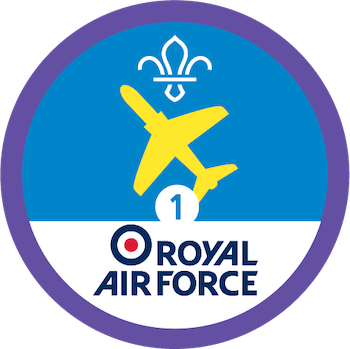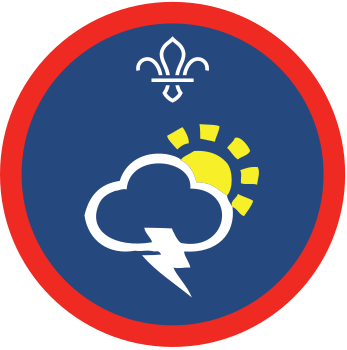
METAR-mind
You’ll need
- Scissors
- Pens or pencils
- Scrap paper
Before you begin
- You’ll need to print off enough ‘METAR riddles’ sheets for everyone.
- Cut them along the middle so each group has the six riddles.
We suggest people work in groups of four, but feel free to adjust this if it’s not right for your group.
- We’ve included some METAR information below to help you explain it.
Get riddling
- The person leading the activity should explain that a METAR is a meteorological terminal aviation route weather report – pilots use them as a quick and easy way to share a lot of information about the weather conditions at that time.
TAFs (terminal aerodrome forecasts) have a similar structure – they’re more like a traditional forecast because they predict changes in the weather.
- The person leading the activity should choose one person to be the code master. It could be themselves, a helper, or anyone who’s already an expert at METARs.
The code master needs to be able to see the ‘METAR riddles answers’ below, so make sure they have access to a device with this activity on, or your print the answers before the session.
- Everyone else should split into groups of about four people.
- Each group should take a ‘METAR riddles’ sheet. They should cut along the dotted lines to separate out each riddle.
- Each group should try to solve the riddles. When they think they know an answer, one person should find the code master and ask if it’s right. If it’s right, they should write it on the card.
- Once each group’s figured out all of the riddles, they should move on to play ‘METAR-mind’.
METAR-mind
- Each group should try to put the pieces of the METAR in the right order. They should jot down the order on a scrap piece of paper.
- Once they’ve agreed on an order, they should ask the code master to check it. The code master should tell the group how many pieces of the METAR are in the right place – but not which ones are in the right place.
- The group should try to rearrange their METAR then ask the code master to check it again. Just like before, the code master should just tell the group how many pieces of the METAR are in the right place (not which ones are right).
If they have more pieces in the right position, they know they’re getting closer. If they have fewer pieces in the right position, they’ve changed something that was right to begin with.
- The group should keep rearranging their code, and checking with the code master, until they have all of the pieces of the METAR in the right order.
Explain the code
- Once everyone’s got their code in the right order, they should gather back together.
- The person leading the activity should help everyone understand the code. Why might each bit of the code be useful for pilots? What does the example METAR tell people about the weather?
Time – 171150Z
- The time and date the METAR was created, in the format date, hour, minute.
- In this example, the METAR was created on the 17th day of the month at 11.50am.
- The Z comes from a military abbreviation – it shows that the timezone’s Greenwich Mean Time.
Wind – 22018KT
- The wind speed and direction, in the format direction in degrees, speed in knots.
- In this example, the wind’s coming from 220 degrees (south west) at a speed of 18 knots (abbreviated to KT).
- 18 knots is about 21mph. Online calculators and conversion charts help people change between the two.
Visibility – 4500
- The visibility in metres.
- In this example, the visibility’s 4,500 metres.
Clouds – FEW020
- The amount of clouds (an abbreviation) followed by their height in hundreds of metres.
- In this example, there are few clouds at 2,000 metres.
- The other abbreviations are ‘BKN’ for broken, ‘SCT’ for scattered, and ‘OVC’ for overcast.
Temperate – 08/06
- The temperature and dew point in degrees Celsius.
- The dew point’s the temperate air needs to be cooled to become saturated with water. If it gets colder than this, the water will precipitate as rain (or snow). If the dew point’s close to the temperate, the air’s nearly saturated which could make it cloudy or foggy.
- In this example, the temperature’s eight degrees and the dew point is six degrees. The temperature’s above the dew point, so there won’t be rain or snow, but the two temperatures are close so there’ll likely be clouds.
Pressure – Q1009
- The air pressure in hectopascals.
- In this example, the air pressure’s 1,009 hectopascals.
- In the UK, normal air pressure’s around 1,013 hectopascals.
Riddle answers
- I am the word for how far you can see, I also rhyme with nobility. I can be reduced by things in the way, and I won’t be great on a cloudy day. Visibility
- Until I am measured, I am not known. Yet how you miss me, when I have flown. Time
- I will affect the weather near and far, I am measured in Millibars. I come before the words point and cooker, but won’t be seen by a single onlooker. Pressure
- I’m a breeze or a bluster, a cyclone or gale. I am what is measured, on the Beaufort scale. Wind
- This is something you see in the sky, you’ll need more hints though, so I’ll explain. It’s sometimes fluffy and sometimes grey, and can release snow, hail or rain. Clouds
- I will make sweat or make you shiver, I will melt the snow to fill the river. I go up and down, but don’t move an inch, I can be cold enough to make you flinch. Temperature
Completed METAR solution
1 – Time
2 – Wind
3 – Visibility
4 – Clouds
5 – Temperature
6 – Pressure
---
1 – 171150Z
2 – 22018KT
3 – 4500
4 – FEW020
5 – 08/06
6 – Q1009
Reflection
This activity was all about problem-solving. People might have encountered METAR reports for the first time in this activity, but some people use them every day. Who might use METAR reports regularly? People may think about pilots or commercial fishers. How might these people use METAR reports? In the activity, people had to look at things differently and try different options to solve the riddles and find the right order. How did people feel when they got something right? When else might it be useful to look at things creatively?
This activity also needed people to be a team player. Did working in a team make this activity easier or trickier? How did people make sure that everyone took part? Did different people have different strengths?
Safety
All activities must be safely managed. You must complete a thorough risk assessment and take appropriate steps to reduce risk. Use the safety checklist to help you plan and risk assess your activity. Always get approval for the activity, and have suitable supervision and an InTouch process.
- Scissors
Supervise young people appropriately when they’re using scissors. Store all sharp objects securely, out of the reach of young people.
- You may want to add an extra code master if it’s a lot of work for one person. It may depend on the size of your group.
- Code masters could give groups clues if they’re really struggling. This might look like giving them the first letter of a riddle answer, or letting them know which pieces of the code are in the right place.
- To make the riddles and mastermind extra challenging, we’ve suggested you only chat about them at the end. If you want to make it a bit easier, you could talk about the information first. You could also just use the facts to help people create their own METARs.
You may need to scale the riddle cards up if anyone needs them to be bigger. You could also display them on a screen so you can adjust the contrast or use a screen reader.
All Scout activities should be inclusive and accessible.
People could put their knowledge to the test by creating their own METAR reports and presenting them back to others.
If people were inspired by this activity, there are plenty more meteorological activities in the Air Activities Staged Activity Badge, for example, It's a breeze!, Whatever the weather and Rain dodgers. Scouts could also ignite their passion for the weather with the Meteorologist Activity Badge.

